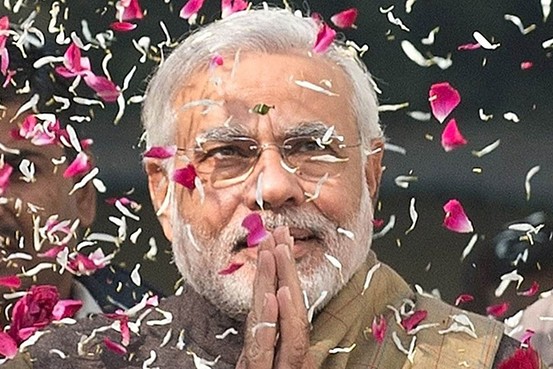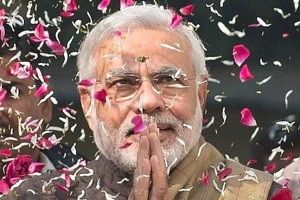WILL THE MARKET BECOME A VICTIM OF IT’S OWN EXPECTATIONS?
To me the biggest surprise of the election verdict was that not a single analyst or political commentator predicted that there will be a problem about forming the opposition party, most were busy cobbling up numbers of how the government is going to be formed and now we are trying to figure out how the opposition party and its leader are going to be selected. The verdict reflects the widespread anger at the incumbent government more than anything else. It has become fashionable to blame politics for all that has gone wrong in the Indian economy in the last 5 years and hence with the change at the centre most people think that the new government will make wonders happen and suddenly we will again be growing at 9 %. What effect the change has on the growth rate only time will tell and I for one and most of the market players are optimistic. One of the best things to have happened is the change in sentiment and this is all pervasive. It is difficult to define the word sentiment and at best one may say it is the process of identifying people’s attitudes and emotions. This has been at its nadir in the past and more than anything I think sentiment has bottomed out, thank you Mr. Modi and hence once again Namo Namah (click here to thank him). The business community and the foreign investors were almost ecstatic and pumped in as much as 3600 crores in a single day on Friday 16th May. The Nifty has already soared more than 18 % in dollar terms in this calendar year despite the fact that the net FII inflow has been only roughly $ 6 billion compared with the roughly $ 20 billion during the whole of 2013 (which was a crises ridden year). Hence the conclusion is that this bull still has room to run. The fact that the BJP has got a clear majority on it’s own means that they will be able to take decisions without recourse to alliance partners and there will be no arm twisting tactics which will threaten this process. I think most investors have been surprised with the euphoria in the stock market in the last 2 weeks and the answer is that Mr. Modi as chief minister of Gujarat proved adept at cutting through the bureaucracy and red tape, wooing foreign direct investment and in implementing infrastructure projects and he is widely expected to do an encore at the centre. The question that comes to my mind and I am sure that most investors will be asking is what now, the market has rallied, what should we expect from the market from here onward, what has happened thus far is that investors have come out of hibernation and sold their entire holdings on the expectations of a vertical crash. I would not be so pessimistic and what to do would depend on each persons profile and priorities but in a nutshell:
(a) If you are a short term trader or a momentum trader (not an investor) the direction of the market is of no significance since you can trade it both ways so all the best and just continue doing what you have done so far.
(b) If you are a trend follower you must be doing well already so there are no regrets since trend is your friend.
(c) If you are a long term investor and have sold in the last few days the best way to play this trade is to take a dual approach i.e. be active by buying individual stocks (buying the dip) and also passive via the ETF (Exchange Traded Funds not mutual fund) route. There are currently 3 ETF’s viz NIFTYBEES, BANKBEES and CPSEETF. As India attracts more foreign investments the number of sector wise ETF’s will multiply in the time to come and participation can easily be achieved by investing a fixed amount on a specific date in each month. The market is bound to correct when and why god alone knows so wait for a correction and buy. Basically corrections can start any time, for any reason or for no reason!!!
The current rally is based on expectations of political stability, economic policy and most important implementation and execution of stalled projects so if one were to bifurcate and analyse these expectations the following conclusions emerge:
(a) As far as economic policy is concerned the BJP and the Congress have more in common than is widely believed so one should not expect any ideological shift in broad policy issues.
(b) What the market expects is a change in the execution and that the implementation bottlenecks mainly land acquisition, environmental clearances and raw material availability will be sorted out. However a vast number of projects are stuck because of issues which are under the purview of the state governments and a BJP government at the centre has no control over them. To be more specific the centre has control over environmental clearances which is a central subject and not over land acquisition which is a state subject. The raw material part is under the purview of the centre but the judiciary has got involved and I am pretty confused about the current status. In a nut shell, state level issues weigh heavily in all the decision making and implementation bottlenecks and this verdict has little effect on all such matters.
(c) The other issue which needs to be remembered is that there are challenges on how the capex cycle and the economy can be financed, most infrastructure companies are highly leveraged and will have to undergo a significant de-leveraging so as to enable their balance sheets to strengthen. It is not impossible but it cannot happen overnight!! The basic issue is of the fiscal policy and that will continue to remain tight and will make the task of these companies more difficult. In view of this the market expectations of a sharp pick up are over optimistic.
(d) The next question would be the INR and it is a well known fact that after what happened in May 2013 the RBI is going to arm itself with a fistful of dollars, so expectations of a runaway appreciation of the currency are misplaced. The rupee is expected to trade in a band in the next one year, click here to read more about this.
(e) The market has conveniently forgotten the fiscal deficit and the credit rating issues which it was plagued with in the last 2 calendar years and one should remember that these are not going to disappear with a new government at the centre. Also there are widespread predictions of a patchy monsoon and that will not help the economy.
(f) That said history shows that as far as disinvestment is concerned the NDA has a better track record than the UPA.
(g) The Gujarat model has been widely publicized but has growth in Gujarat led to development, i am confused, read here to form your own opinion.
(g) The Bull Run this far has been completely FII driven and profit booking is bound to happen. I think opportunities exist to buy good businesses in the software, pharma and FMCG sector whenever they are available at reasonable valuations.
I wish to clarify that this is not meant to be a bearish post and wish to reiterate that I have been continuously bullish on the equity as an asset class and continue to be so, but at the same time the market does risk becoming a victim of its own expectations and hence a word of caution or a reality check if that is what it can be called. Lastly beware of the four most dangerous words in the stock market viz. ‘This time it’s different’ (because it never is).
INTERESTING LINKS
Ten Sure Fire Trading Rules to make you rich (humour)


An excellent article indeed. Appreciate your writing skills. Personally I feel there is a huge stem left for banking and NBFCs. PSUs may fairly play well, because of disinvestment and better performance in coming years! Finance companies active in home loans and infrastructure will do well. For an investor with medium term perspective, I would like to suggest Persistent Systems. For an investor keeping long term perspective Marksans Pharma could be advised. One can easily expect to earn 25% yearly returns safely in both the stocks.
Nice overview..
Here is another socio perspective published in The Hindu..
Worth a read.
http://www.thehindu.com/opinion/lead/an-open-letter-to-narendra-modi/article6022900.ece?homepage=true